Greetings from Blue Harbor Fish Co.®
When it comes to our Wild Albacore Tuna and Wild Pink Salmon, we focus on seafood that’s simple, sustainable, and superior.
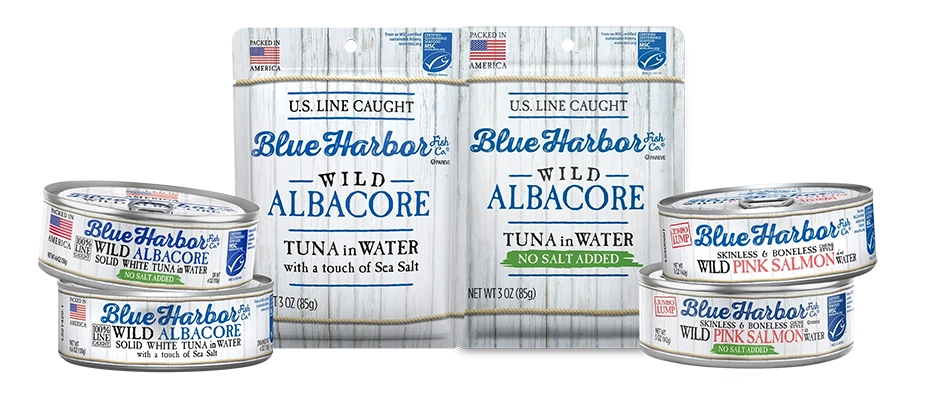
Looks Good. Tastes Good.
Does Good.
Blue Harbor Fish Co.® is committed to providing fresh-tasting fish that’s also better for you and the ocean. Most of all, we’re hooked on these core beliefs:
- Simple ingredients you can feel good about! Blue Harbor Fish Co.® Wild Albacore Tuna and Wild Pink Salmon is packed with just a little bit of water and a touch of sea salt (or you can opt for our no salt added varieties).
- Sustainable fish and fishing practices. All Blue Harbor Fish Co.® seafood is Marine Stewardship Council (MSC) certified sustainable – helping to ensure healthy fish stocks for years to come.
- Superior seafood starts with superior quality. Upon opening a can or pouch from Blue Harbor Fish Co.®, you’ll see that our fish features premium, hand-selected Albacore Tuna filets and skinless & boneless, jumbo lump Alaskan Pink Salmon.
What Makes Our Seafood Sustainable?
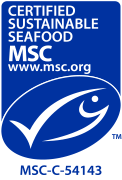
Blue Harbor Fish Co.® stands for sustainability, which is why all of our seafood is Marine Stewardship Council (MSC) certified. As the global sustainability standard used by most seafood companies and retailers, MSC certification supports sustainable fishing practices, focusing on these primary factors:
- Fish stock health. Ensuring stocks are fished in a way that does not threaten the population’s long-term health.
- Ecosystem impact. Minimizing the impacts of fishing to the surrounding wildlife and ecosystem.
- Fishery management. Making sure there is effective management in place to comply with relevant laws and be able to adapt to changing environmental circumstances.
When you see the MSC blue fish label on Blue Harbor Fish Co. Wild Albacore Tuna and Wild Pink Salmon, you can be confident that the fish were caught according to the highest sustainable fishing standard. Our MSC certified Tuna and Salmon is from a fully verified supply chain to ensure our seafood is from an MSC certified source and supports environmentally sustainable fishing practices.
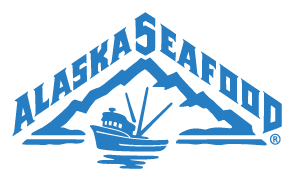
Blue Harbor Fish Co.® Wild Pink Salmon is also Alaska Seafood-certified.
When you reach for a can or pouch of Blue Harbor Fish Co.® Wild Pink Salmon, you can be assured that:
- The salmon is wild caught and exclusively sourced from the pristine waters of Alaska’s rugged 34,000-mile coastline.
- It is caught sustainably and responsibly.
- You are supporting Alaska’s fishing families and communities.
The seafood industry is Alaska’s largest private sector employer. Alaska’s commercial catch also accounts for over half of the nation’s commercial seafood harvest.
Read more about the benefits of Alaska seafood at AlaskaSeafood.org.
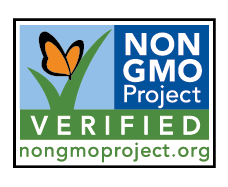
Look for the Non-GMO Project Verified Seal where it appears on our products.
For more information visit: https://www.nongmoproject.org
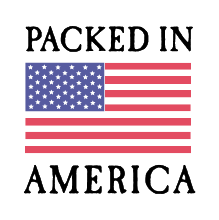
Blue Harbor Fish Co.® Albacore Tuna is proudly packed in the USA.
Frequently Asked Questions
All Wild Albacore Tuna and Wild Pink Salmon packed into Blue Harbor Fish Co.® cans and pouches are always MSC certified, wild caught fish.
Our Wild Albacore Tuna is caught by fisheries that are Marine Stewardship Council (MSC) certified sustainable.
Blue Harbor Fish Co.® Wild Pink Salmon is caught in Alaska by MSC certified sustainable fisheries. Alaska Seafood is wild caught, sustainably and responsibly, from the pristine waters on Alaska’s 34,000-mile coastline.
The seafood industry is Alaska’s largest private-sector employer, so when you buy Blue Harbor Fish Co.® Wild Pink Salmon, you are supporting generations of fishing families and communities. Read more about the benefits on Alaska Seafood at AlaskaSeafood.org
Blue Harbor Fish Co. Wild Albacore Tuna is sourced from an MSC certified fishery that uses a longline catch method. This means our seafood comes from a fishery that is targeting healthy fish populations, ensures minimal impact on the surrounding ecosystem, and is well-managed so stocks can be fished for the long-term.
Blue Harbor Fish Co.® Wild Pink Salmon is caught using the purse seine method. A purse seine is a wall of netting deployed around a school of fish. After deployment, it’s closed at the bottom by means of a line passing through rings attached along the lower edge of the net. The netting is then closed around the school of fish like a bag or purse.
At Blue Harbor Fish Co.®, we pack our products as close to the source as possible. Our Wild Albacore Tuna is proudly packed in the USA, specifically in American Samoa, which is a U.S. territory.
At Blue Harbor Fish Co.®, our Wild Pink Salmon is packed in Ecuador.
The small, clear crystals that are sometimes seen in albacore tuna are called struvite crystals. These struvite crystals naturally occur in albacore tuna due to the minerals the tuna absorbs while living in the ocean. After the tuna is canned, these minerals will sometimes react with each other during the sterilization process. Struvite crystals are simply a naturally occurring product of these reactions. Although struvite crystals can be confused with glass, they typically have straight edges, can be easily scratched and crushed into powder, and when placed into boiling vinegar or lemon juice, the crystals dissolve. Glass crystals do not share these characteristics.
No. Blue Harbor Fish Co.® can and pouch products are gluten free. They do not contain gluten because tuna, salmon, water and sea salt do not contain gluten, and these are the only ingredients packed into Blue Harbor Fish Co.® products.
No. Blue Harbor Fish Co.® can and pouch products are soy free. They do not contain soy because vegetable broth is not an ingredient in these products — and tuna, water and sea salt do not contain soy.
No. Blue Harbor Fish Co.® can and pouch products are non-GMO. Look for the Non-GMO Project Verified seal on our products. For more information, visit: NonGMOproject.org.
Canned tuna is listed on the EPA/FDA advisory as one of the fish that has very low levels of methylmercury. Blue Harbor Fish Co.® uses AOAC INTERNATIONAL-approved testing methods to ensure that its canned tuna is well below the FDA limit of 1.0 parts per million mercury. For more information on mercury levels in tuna, go to the FDA’s website, www.FDA.gov, or call the FDA Center for Food Safety Information Line at 1-888-SAFEFOOD.
All Blue Harbor Fish Co.® products are prepared and packaged using safe, FDA-approved materials. Blue Harbor Fish Co.® cans have internal linings (food contact surfaces) that do not contain BPA. Blue Harbor Fish Co.® pouches do not contain BPA.